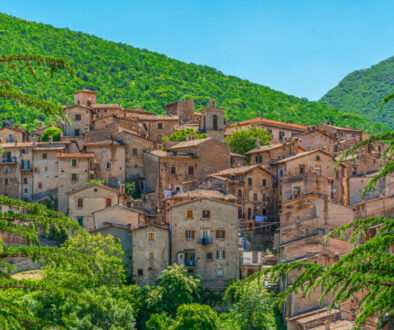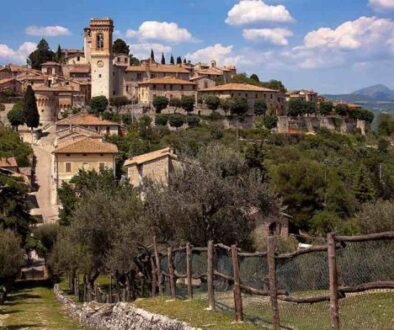The city of bells and fire
Agnone is located in the northern part of the province of Isernia, about 800 meters above sea level and in a context largely mountainous, with large forests, meadows and glades, streams and a rich flora, including oaks, pines, poplars and firs . With a very cold climate during the winter, with frequent snowfall, Agnone is a typical mountain village of Molise.
Agnone has a very ancient history, given that according to their studies here stood Aquilonia, the ancient city of the Sannio that the Romans, commanded by Lucio Papirio Cursor, conquered a large and crucial victory in 293 BC. To make identification more likely, the numerous archaeological finds here and in the adjacent areas, such as the funeral stew of Vibia Bonitas, which has been preserved today in the Italo Argentino Theater. Agnone became an important center during the Longobard domination, but around the year 1000 was in decline; was the powerful Venetian family of the Borrello to bring soldiers and craftsmen from Venice, or more probably from the Dalmatian colonies of the city. Many of Agnone, in fact, betray a Venetian foundation or refoundation, as evidenced by the numerous statues depicting the Lion of Saint Mark and the presence of the church of Saint Mark the Evangelist. Agnone then went to the Angevins and Aragonese; then, originally from Abruzzo, with the government of Gioacchino Murat was required to pass to Molise. In this age Agnone was a thriving city, which boasted a large number of commercial activities and the presence of many intellectuals and writers, which has earned the nickname “Athens of Sannio”. The following centuries, however, saw a progressive accentuation of the phenomenon of emigration, which still continues.







Today, Agnone has developed a tourism based mainly on the agritourism and equestrian sports offer, but the most famous commercial activity in the country is undoubtedly the Foundry Marinelli, which from the Middle Ages produces bells for the most important churches in Italy and the world, the only such activity to be able to qualify for the pontifical brand for its products. Among the best known, those for the abbey and cathedral of Montecassino, and the “Giovannea”, the bell of the Jubilee 2000, wanted by Pope John Paul II.
Among the most typical traditions of Agnone is the celebrated ”ndocciata”, the greatest rite of fire known to you, a parade of giant torches built with spruce logs that move along the course of the country. It is held every year on December 24 and has very ancient origins, since it seems that the same Sannites used the “ndocce” as torches during their tribal shifts. This is a very impressive ritual that has been colored in the centuries of the most diverse meanings, so much so that it has also been considered as apotropaic against witches; for sure it carries on some of the ancient rituals to mark the winter solstice. These great torches, which can be either single or multiple up to 20 fires, are brought by representatives of the five contradictions involved, namely Capammonde and Capabballe, Colle Sente, Guastra, Sant’Onofrio and San Quirico. Hundreds of torpedo holders in traditional dress, with the hoods characteristic, parade by lighting the countryside with a fire of fire, while the harpoons accompany it. After various events, including those that reward the most beautiful and evocative ndocciata, all ends with a great bonfire called “Falò della Fratellanza” near the crib of Piazza Plebiscito. Often, the ‘ndocciata’ is also organized outside Agnone on special occasions, for example in 1996 to celebrate the 50th anniversary of John Paul II’s priesthood, to greet Campobasso the passage of the Olympic torch in 2006 before the Winter Games in Turin, or during the Milan Expo 2015, along the capital’s Dock.


